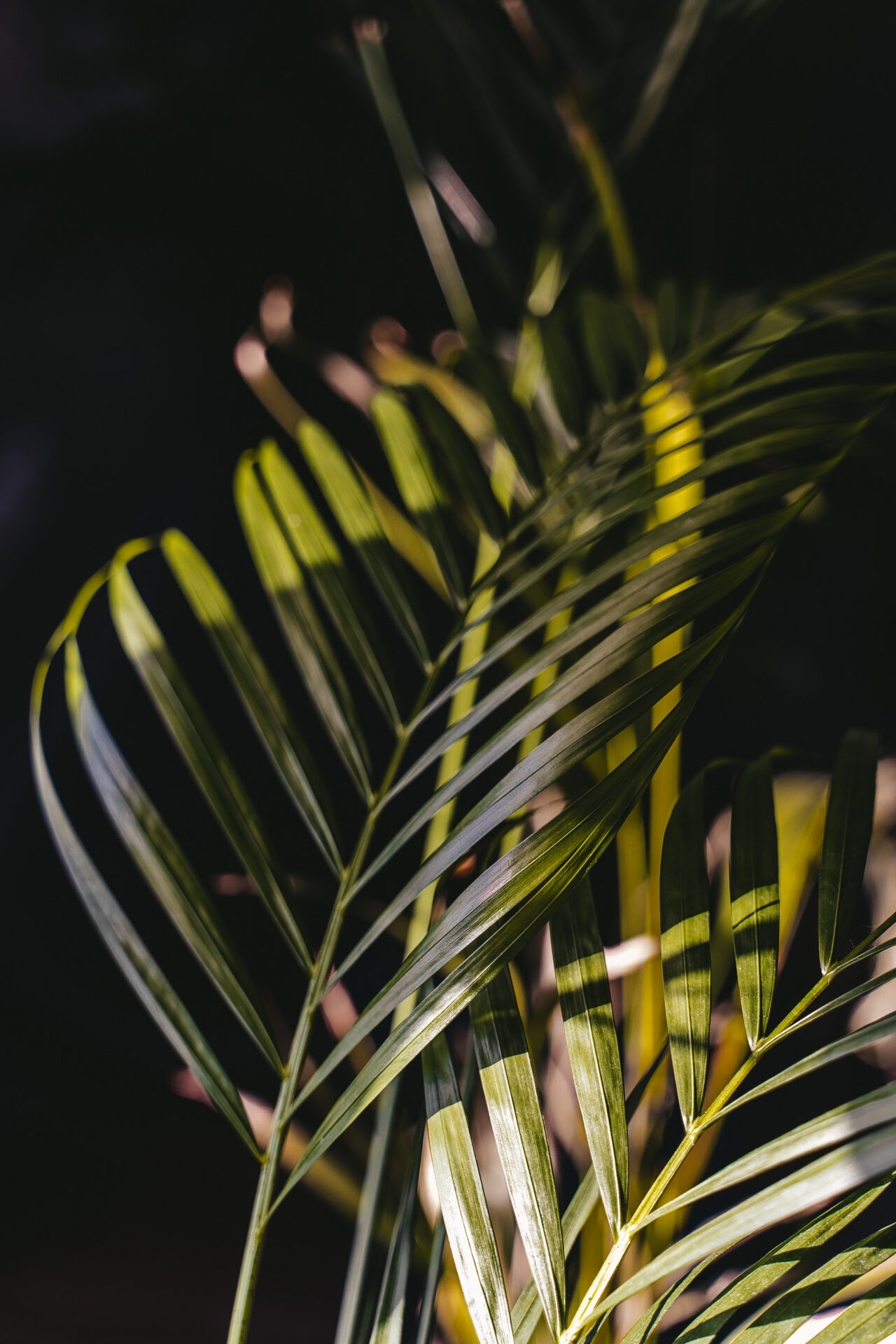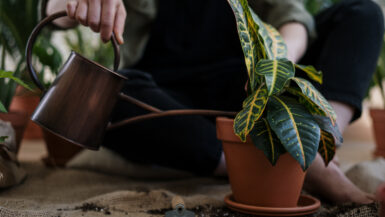Indoor vertical gardening has become an increasingly popular solution for urban dwellers who wish to grow fresh produce in limited space. However, one significant challenge these garden enthusiasts face is inadequate sunlight, especially in apartments with limited natural light. This article will provide valuable tips and insights for successfully growing indoor vertical gardens in low-light conditions.
You can create a lush, thriving garden even in your home’s most dimly lit corners by understanding the optimal plant choices, lighting solutions, and proper maintenance techniques. Read on to discover how to maximize your vertical garden’s potential despite the challenges of limited light exposure.
Proper Care and Maintenance for Low Light Vertical Gardens
Creating a flourishing indoor vertical garden in low-light conditions requires knowledge of the appropriate plants, lighting solutions, and maintenance techniques tailored to these challenging growing conditions. This section will delve into the essential aspects of caring for a low-light vertical garden, ensuring that your plants remain healthy and vibrant even in the dimmest of spaces.
Choosing the Right Plants for Low Light Conditions
When designing your vertical garden for low-light environments, it’s crucial to select plants that naturally thrive in such conditions. These plants are often shade-tolerant varieties, which require less sunlight for photosynthesis. Some great choices for low-light indoor vertical gardens include pothos, snake plants, ferns, and ZZ plants. Opting for these resilient species will increase your vertical garden’s chances of success.
Artificial Lighting Solutions
While some plants can survive in low light, providing supplemental lighting can significantly improve their health and growth. LED grow lights are an energy-efficient and effective option for indoor gardens, as they can be easily mounted to your vertical garden structure. Be sure to research the specific light requirements for each plant species and adjust the artificial lighting accordingly to ensure optimal growth.
Monitoring and Adjusting Water and Nutrient Needs
Low light conditions can often lead to reduced rates of photosynthesis in plants, which in turn affects their water and nutrient consumption. It’s essential to monitor the moisture levels in your vertical garden carefully and adjust your watering and fertilizing schedule to match the needs of your plants. Overwatering or over-fertilizing can cause harm to your plants, so it’s best to err on the side of caution.
Pruning and Rotation for Even Growth
In low-light environments, plants may become leggy or exhibit uneven growth as they stretch toward available light sources. Regular pruning can help maintain your vertical garden’s aesthetic appeal and overall health. Additionally, consider rotating your plants periodically to ensure that all sides receive equal exposure to the limited light.
Creating the Perfect Workspace Oasis
Indoor vertical gardens are an excellent addition to office spaces, promoting relaxation and connection to nature. For creative indoor vertical garden ideas for the office, check out our article on Indoor Vertical Garden Ideas for the Office Space. You can create a beautiful and healthy vertical garden for your workspace by incorporating low-light plants and the proper care techniques mentioned above.
Maintaining an indoor vertical garden in low light conditions may require extra attention and care, but the benefits of having a lush, green oasis in your home or office make the effort worthwhile. By selecting the right plants, providing supplemental lighting, and carefully monitoring water and nutrient needs, you will be well on your way to nurturing a thriving vertical garden in even the most challenging light conditions.
Choosing Low-Light Tolerant Plants for Vertical Gardens
Finding the perfect plants for your indoor vertical garden can be challenging, especially when dealing with low-light conditions. However, numerous plant species are well-suited for such environments. In this section, we will explore some excellent plant options that are beautiful and low-light tolerant, allowing you to create a thriving vertical garden regardless of your home’s light situation.
Top Picks for Low Light Vertical Gardens
Various plants can thrive in low light conditions, making them ideal candidates for your indoor vertical garden. Some of the best options include:
1. Pothos (Epipremnum aureum): Also known as devil’s ivy, this hardy, trailing plant can tolerate various lighting conditions and looks stunning, cascading from a vertical garden.
2. Snake Plant (Sansevieria trifasciata): With its tall, upright leaves and low maintenance requirements, snake plants make a striking addition to any vertical garden setup.
3. Ferns: Many fern species, such as the Boston fern (Nephrolepis exaltata) and the maidenhair fern (Adiantum capillus-veneris), can adapt well to low light conditions and add a soft, delicate touch to your garden.
4. ZZ Plant (Zamioculcas zamiifolia): Known for its glossy, dark green leaves and resilient nature, the ZZ plant is a fantastic option for those with limited light exposure.
5. Peace Lily (Spathiphyllum spp.): This popular houseplant tolerates low light conditions and helps purify the air, making it a valuable addition to any indoor garden.
Considerations for Plant Combinations
When designing your indoor vertical garden, consider how the various plants will interact with each other. Select plants with similar watering and humidity requirements to prevent potential conflicts. Additionally, consider each plant’s growth habits to ensure an aesthetically pleasing arrangement that allows for proper airflow and access to light.
Experiment with Different Plant Types
Don’t be afraid to experiment with a variety of low-light-tolerant plants to discover the perfect combination for your indoor vertical garden. Mixing different textures, colors, and growth patterns can create an eye-catching display that showcases the beauty of nature, even in low-light conditions. As you gain experience and observe how each plant responds to your specific environment, you can further optimize your garden for maximum success.
By carefully selecting low-light tolerant plants and considering their compatibility, you can create a stunning indoor vertical garden that will thrive in less-than-ideal lighting conditions. This will add visual interest to your living space and provide a calming, natural sanctuary to enjoy year-round.
Artificial Lighting Options for Indoor Vertical Gardens
Supplemental lighting for your indoor vertical garden is essential in low-light conditions to ensure that your plants receive the necessary amount of light for photosynthesis and overall health. In this subsection, we will explore various artificial lighting options suitable for indoor vertical gardens, helping you make the best choice for your specific needs.
LED Grow Lights: Energy-Efficient and Effective
LED grow lights are popular for indoor gardens due to their energy efficiency and customizable spectrum, which can closely mimic natural sunlight. These lights can be mounted directly to your vertical garden structure, providing consistent and targeted light to your plants. Additionally, LED grow lights produce less heat compared to other lighting options, reducing the risk of overheating and damaging your plants.
Fluorescent Lights: An Affordable Alternative
Fluorescent lights, such as T5 and compact fluorescent lights (CFLs), are another option for supplementing your indoor vertical garden’s lighting needs. They are relatively inexpensive and provide a suitable spectrum for plant growth. However, they may not be as energy-efficient as LED options and can generate more heat, requiring careful placement to avoid harming your plants.
High-Intensity Discharge (HID) Lights: Powerful but High-Maintenance
HID lights, which include metal halide (MH) and high-pressure sodium (HPS) lamps, are known for their powerful light output and have been used in commercial horticulture for years. However, they can be more expensive and less energy-efficient than other options, requiring additional equipment, such as ballasts and reflectors. Moreover, HID lights generate significant heat, making them less suitable for small indoor vertical gardens.
Considerations for Selecting the Right Lighting Option
When choosing the best artificial lighting option for your indoor vertical garden, consider factors such as:
1. The size and layout of your garden: Smaller gardens may benefit from compact lighting solutions like LED strips or CFLs, while larger setups may require more potent options like T5 fluorescents or HID lights.
2. Your plants’ specific light requirements: Research the optimal light spectrum and intensity for each plant species in your garden and select a lighting solution to accommodate these needs.
3. Energy efficiency and heat output: Choose an energy-efficient lighting option that produces minimal heat to save on electricity costs and reduce the risk of overheating your plants.
By carefully considering the various lighting options and their benefits and drawbacks, you can ensure that your indoor vertical garden receives the necessary light to thrive in low-light conditions. Supplemental lighting will promote healthy plant growth and create a visually stunning and vibrant garden display in your home.
Enhancing Light Availability with Reflective Surfaces
In addition to selecting the appropriate plants and artificial lighting, another crucial aspect of growing indoor vertical gardens in low-light conditions is maximizing the available light by strategically using reflective surfaces.
By incorporating reflective materials into your garden design, you can effectively increase the amount of light that reaches your plants, thereby improving their overall health and growth. This subsection will discuss various methods and materials for enhancing light availability using reflective surfaces in your indoor vertical garden.
Choosing the Right Reflective Material
Several reflective materials can improve light distribution in your indoor vertical garden. Some popular options include:
1. Mylar: This highly reflective polyester film is often used in grow rooms and can easily be applied to the walls surrounding your vertical garden or the backside of your garden structure. Mylar is available in various thicknesses, with a higher number representing a more durable material.
2. Aluminum foil: A cost-effective and readily available option, aluminum foil can cover the walls around your vertical garden or as a reflective mulch on the surface of your growing medium. Ensure that the shiny side of the foil faces the plants for maximum reflectivity.
3. White paint: Painting the walls around your vertical garden with flat white paint can help bounce light back onto your plants. While not as reflective as Mylar or aluminum foil, white paint is a simple and aesthetically pleasing solution.
4. Reflective film: Various purpose-made reflective films, such as Foylon and Orca Grow Film, are available on the market. These products are designed specifically for horticultural applications and offer high reflectivity and durability.
Optimizing Reflective Surface Placement
To maximize the benefits of reflective surfaces, strategically placing them in your indoor vertical garden is essential. Some tips for optimal placement include:
1. Position reflective materials on the walls surrounding your garden: By covering the walls around your vertical garden with reflective materials, you can bounce light back onto your plants and make better use of the available light.
2. Place reflective surfaces behind your artificial lights: Installing reflective materials behind them can help direct more light toward your plants, ensuring they receive adequate illumination.
3. Utilize mirrors: Strategically placing mirrors around your garden can further amplify the light available to your plants. Be cautious when using mirrors, as they can create hot spots and potentially damage your plants if not positioned correctly.
Maintaining Reflective Surfaces for Maximum Efficiency
It’s crucial to regularly clean and maintain your reflective surfaces to ensure that they continue to provide optimal light distribution. Dust, dirt, and other debris can accumulate on these surfaces, reducing their reflectivity and effectiveness. Regularly wiping down your reflective materials with a damp cloth will help maintain their light-reflecting properties and keep your indoor vertical garden thriving in low-light conditions.
By incorporating reflective surfaces into your indoor vertical garden design, you can significantly enhance the available light for your plants, enabling them to grow and flourish even in challenging lighting situations. Your vertical garden will receive the necessary illumination to support healthy and vibrant plant growth through careful selection and placement of reflective materials and regular maintenance.
Optimizing Vertical Garden Designs for Low-Light Spaces
Designing an indoor vertical garden for low-light conditions requires careful planning and creativity to ensure the best possible outcome for your plants. This subsection will explore various strategies for optimizing vertical garden designs, considering factors such as plant selection and layout and incorporating light-enhancing features. Applying these techniques allows you to create a thriving and visually appealing indoor vertical garden, even in spaces with limited natural light.
Strategic Plant Placement for Maximum Light Exposure
When designing your vertical garden, consider each plant species’ light requirements and place them accordingly within the garden structure. Position plants with higher light needs at the top of the garden, where they will receive more light, and those with lower light requirements towards the bottom. This strategic placement will ensure that each plant gets the appropriate light for optimal growth.
Layering and Staggering Plants for Optimal Light Distribution
Another practical design technique for low-light vertical gardens is to layer and stagger your plants. This approach allows for better light penetration and air circulation, which is crucial for plant health. By arranging your plants in a well-spaced, staggered pattern, you can create an attractive garden display that maximizes light distribution throughout the vertical space.
Utilizing Vertical Garden Systems with Integrated Lighting
One way to optimize your vertical garden design for low-light conditions is to use a garden system with integrated lighting. These systems often include built-in LED grow lights, providing targeted and efficient plant illumination. By choosing a vertical garden system with integrated lighting, you can ensure that your plants receive adequate light, regardless of the limitations of your indoor space.
Embracing the Beauty of Low-Light Plants
When designing an indoor vertical garden for low-light conditions, embracing the unique characteristics of low-light plants is essential. Many of these plants, such as ferns, snake plants, and pothos, have interesting textures and colors that can add visual interest to your garden. Choosing attractive and well-suited plants for low-light conditions allows you to create a stunning garden display that thrives in your specific environment.
Creating a Focal Point with Light and Color
Adding a focal point to your vertical garden design can draw attention and create a visually appealing display. Use colorful or variegated plants, or even add decorative elements like small sculptures or artwork, to develop a point of interest within your garden. Additionally, consider using spotlights or accent lighting to highlight your garden’s focal point and enhance the overall appeal of your low-light vertical garden.
By implementing these design strategies, you can optimize your indoor vertical garden for low-light spaces and create a thriving, attractive green haven in your home. With careful planning and attention to detail, you can overcome the challenges of limited light and enjoy the numerous benefits of a lush, healthy vertical garden.







Leave a reply